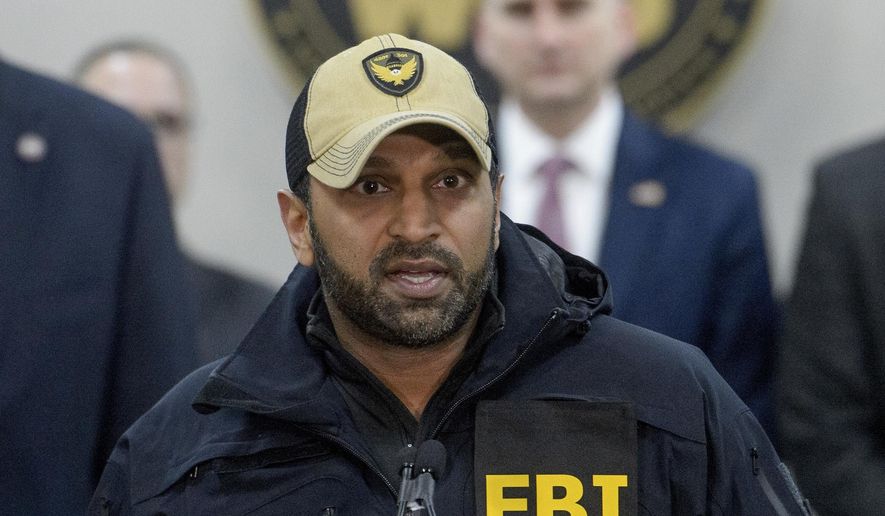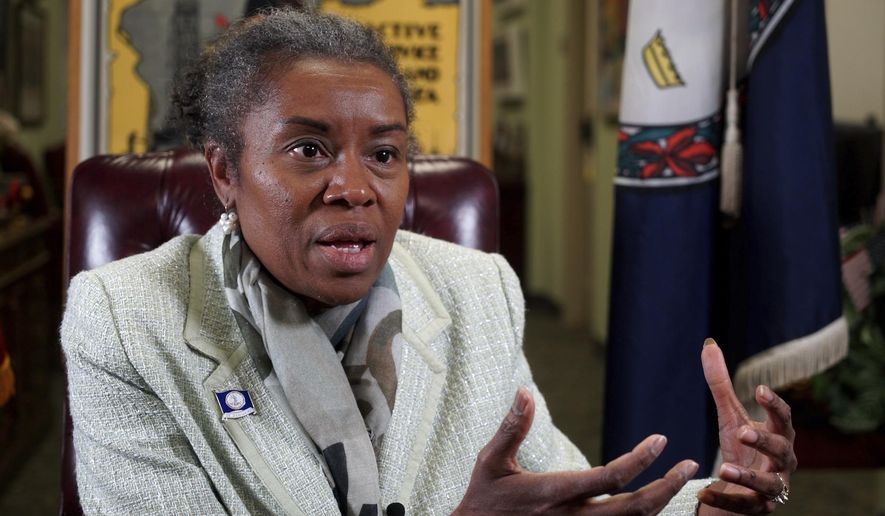By Stephen Dinan – The Washington Times – Monday, November 4, 2024
Shah Mahmoud Selab flew into Philadelphia International Airport in November 2021, part of President Biden’s Afghan airlift, and was quickly “paroled” into the community and made his way out West.
By August 2021, he was in Las Cruces, New Mexico. On a clear, hot summer day, he accosted a 12-year-old boy. He started off showing the boy explicit images on his phone, began rubbing the boy’s genitals, punched him in the face and then chased him into a public park restroom. Selab alternately hit him, kissed him, and tried to get the boy to touch his penis, all while trying to force a $20 bill on the boy.
The child, bruised and bleeding, escaped after someone knocked on the bathroom door. Selab answered it, likely preventing the sexual assault from turning into rape.
Selab was convicted.
In the government’s sentencing recommendation to the judge, prosecutors made a startling admission: He faced criminal arrest in Afghanistan in 2013, “but no information about that arrest is available.”

Selab is one of the myriad high-profile cases of migrants who have ended up in the U.S. during the Biden administration and went on to be connected to heinous crimes.
Some victims have become well-known.
Rachel Morin, raped and slain on the Ma & Pa trail in Bel Air, Maryland; Laken Riley, raped and killed while out for a jog in Athens, Georgia; and Kayla Hamilton, whose killing in her room in Aberdeen, Maryland, was captured on a voicemail she left for her boyfriend as she was strangled with a phone-charging cord.
Other victims are anonymous, such as the 49-year-old man lured to the back of a Chicago commuter train and choked into unconsciousness for $400 and a cellphone. Police have charged four Venezuelan migrants living in a government-run shelter with that crime.
That illegal immigrants are committing crimes is nothing new.
Many experts say the past 3½ years have been different in terms of the number and intensity of the crimes. The new accounts reveal savagery.
Alexis Nungaray, the mother of 12-year-old Jocelyn, described for Congress last month her daughter’s rape and slaying, her body stripped from the waist down and dumped into a Texas creek, her hands and ankles bound. Investigators told the mother the two migrants hoped the water would wash away any DNA evidence.
“Individuals like that do not have a heart. They are nothing but monsters, who are predators,” Ms. Nungaray told the House Judiciary Committee. “I believe the Biden-Harris administration open-border policies are responsible for the death of my daughter.”
After battling Homeland Security Secretary Alejandro Mayorkas, the committee obtained the secret immigration files of those implicated in high-profile crimes. In a series of reports, Chairman Jim Jordan, Ohio Republican, has painted a detailed portrait of the perpetrators and how they came to the U.S.
Of 15 migrants the committee zeroed in on, at least 11 were catch-and-release cases, meaning the government had them in custody at the border or a port of entry and let them go anyway. Often, that was through one of Mr. Mayorkas’ parole programs.
Just two were considered “gotaways” who evaded border authorities. Two other cases were unclear.
In some cases, the immigration files obtained by the Judiciary Committee, known as A files, show that Border Patrol agents checked the migrants in U.S. databases and came up empty. Other times, the A files don’t show any checks, according to the committee, which concluded that agents were so overwhelmed by the sheer numbers that they could not perform the required checks.
Other times, agents did check but missed clear warning signs, such as the killer in the Hamilton case.
After Walter Javier Martinez was arrested, detectives found out with a quick call to El Salvador that he had been associated with MS-13 and had a criminal history there that, at the very least, should have kept him in custody.
Instead, he was sent to live with an adult sponsor, whom he quickly left, and ended up in the trailer park where he encountered and eventually killed Hamilton.
He pleaded guilty this summer to first-degree murder.
Martinez was 16 when he arrived without his parents, making him what the government calls an unaccompanied alien child.
Juan Carlos Garcia Rodriguez, a Guatemalan charged with killing 11-year-old Maria Gonzalez and stuffing her body under her bed, also came as a UAC, as did one of the four Venezuelans accused in the Chicago train attack.
The committee reports indicate many of the migrants steadily built criminal records before they were accused of the crimes that brought national attention.
Jose Barrera Amaya, a Honduran who was initially expelled under the pandemic public health emergency Title 42 border policy and then later sneaked in as a gotaway, was arrested on charges of drunk and disorderly conduct and fighting in Missouri last November. Immigration officials took him into custody but determined he didn’t meet their threshold for being detained, so they released him on his own recognizance with a promise from him that he would stay out of trouble.
It didn’t last, the committee said.
In March, he was charged with first-degree assault. Missouri authorities say he stabbed two men at a laundromat. His A file didn’t indicate any criminal history, but news outlets reported he was involved in killings in Honduras before coming to the U.S.
In Georgia, Jose Ibarra had already built a rap sheet before he was arrested in the killing of Riley, the nursing student.
He was accused in New York City of injuring a child and arrested in Georgia on charges of shoplifting and failure to appear before a judge. Only after he was arrested in Riley’s death did U.S. Immigration and Customs Enforcement officers issue a deportation detainer request for Mr. Ibarra.
Beyond the high-profile crimes, illegal immigrants are responsible for a wave of more mundane illegal behavior.
Fairfax County, Virginia, has seen a spate of cases involving illegal immigrants charged with sex crimes against teen girls.
At the U.S.-Mexico border, illegal immigrants paroled into the U.S. under Mr. Mayorkas are now showing up as accomplices helping smuggle the next wave of migrants into the country.
That includes Yojani Becerra-Ramirez, a Venezuelan on parole who was arrested last week near Naco, Arizona. Agents said they found two illegal immigrants in his car.
‘These crimes are preventable’
Former President Donald Trump has made illegal immigrant crimes a major part of his presidential campaign — and has given victims’ families a prominent platform to blame Mr. Biden. That includes time at the Republican National Convention this summer.
Mr. Trump has labeled the phenomenon “migrant crime.”
Andrew “Art” Arthur, a former immigration judge and head of the national security law division at the old Immigration and Naturalization Service, said the more recent crimes are different.
“These are crimes that shocked the conscience. Then the shock to the conscience becomes even more heightened because the individuals who committed those offenses should never have been here in the first place,” he said.
Alex Nowrasteh, who studies immigration at the Cato Institute and has tracked the debate on crime, said it doesn’t make sense to compare news accounts of crimes today with 20 years ago. He said the level of interest now is so much more intense that it skews any comparison.
“Trying to compare individual criminals from 20 years ago to individual criminals today seems like a fool’s errand,” he said.
The dispute extends to the data.
All sides seem to agree that legal immigrants commit the fewest crimes, but analysts fight over whether illegal immigrants commit more crimes on average than native-born Americans.
Mr. Nowrasteh said illegal immigrants in Texas notched a homicide conviction rate of 2.2 per 100,000 residents from 2013 to 2022. Native-born residents came in at 3 per 100,000.
The Center for Immigration Studies challenges Mr. Nowrasteh’s work, saying it doesn’t consider how Texas gathers data on immigration status. By CIS’s calculations, illegal immigrants have a higher homicide rate.
CIS said Mr. Nowrasteh uses an early snapshot of immigration status that misses when Texas identifies people later in the process. Mr. Nowrasteh says CIS ends up double-counting people.
Whatever the rates, a lot of crimes were committed even before the Biden border surge.
Mr. Nowrasteh’s latest data shows 43 confirmed illegal immigrants arrested on homicide charges in Texas in 2015 during the Obama administration.
Those favoring a crackdown say each homicide by someone who could have been stopped at the border is one too many.
“All of these things could have and should have never happened. These crimes are preventable,” said Don Rosenberg, president of Advocates for Victims of Illegal Alien Crime.
Vetting failures
Mr. Arthur said America’s immigration system is highly permissive, welcoming 1 million legal residents annually. The law does, however, prod the government to weed out bad actors before they arrive.
Someone in Venezuela seeking legal entry, for example, would have to show the American consular officer a letter from the local police department verifying the lack of a criminal history.
There is no such check for Venezuelans who reach a U.S. point of entry. Venezuela doesn’t share its criminal databases, so U.S. officials have few options for verifying someone’s background.
That’s why the law requires them to be detained until after vetting.
“It’s recklessness to take people that we do not know anything about and to release them into the public,” said Mr. Arthur, now a senior fellow at the Center for Immigration Studies.
“We have immigration laws to keep bad people out of the country. When you don’t comply with the laws — you the alien, you the administration — the American people suffer from all the harms those laws are intended to prevent,” he said.
The Homeland Security Department says it doesn’t have the space to detain the numbers of people surging to the border in recent years. It also has never asked for those sorts of resources — and it’s unclear how much past congresses would have delivered on those requests if they had been made.
Given the releases, knowing who is set free is all the more important. Mr. Rosenberg said the Biden team is failing badly at this task.
“If you were a criminal in Honduras or Ecuador, you’re going to get in. If you have nothing else on your rap sheet and if you don’t even have an ID, we’re not checking your fingerprints with the Honduran Embassy,” he said. “When Mayorkas says we’re ‘strongly’ vetting these people, that’s a lie of epic proportions.”
Selab, the Afghan evacuee who attacked the preteen boy in New Mexico, is a case in point.
Homeland Security declined to discuss details of his vetting and instead offered broad outlines of the process Afghans went through as they streamed into the U.S. during the airlift.
The department said those steps centered on checking law enforcement and national security databases. They amount to “point-in-time checks,” and information can become known later.
That doesn’t explain whether the 2013 arrest in Afghanistan was known at the time Selab was paroled or whether authorities missed it in their vetting.
Selab was sentenced to more than 17 years in prison for the attack.
• Stephen Dinan can be reached at [email protected].




















